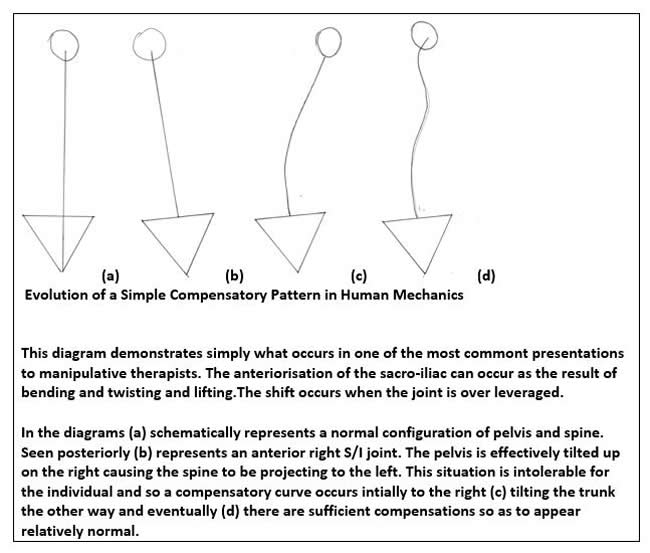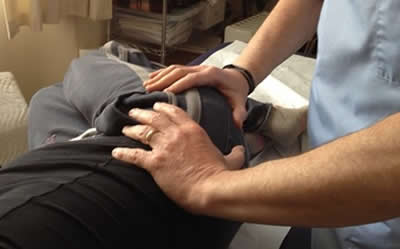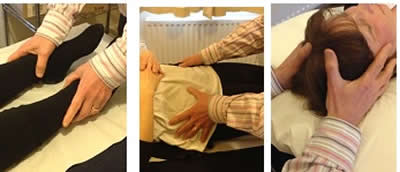Positive Health Online
Your Country

Untangling the Tangled Web
by Jonathan Lawrence(more info)
listed in craniosacral therapy, originally published in issue 261 - March 2020
The key tenet of osteopathy and craniosacral therapy is that ‘structure governs function’. If structure is compromised, then function is altered.
When assessing patients, the practitioner sees where the structure function relationship is less than ideal and where this can be corrected or optimized.
The relationship is disturbed by trauma, disease, habit and other factors such as psycho- emotional ones.
The problems occur as a reaction to a stressor. This primary event creates what was originally called an ‘osteopathic lesion’ now ‘somatic dysfunction’ (SD).[1] The primary SD gives rise to a pattern of compensation both mechanically and physiologically within the system. Thus secondary SDs occur. These secondaries can become the main focus of symptoms concealing the primary.
Secondary effects can be observed fairly easily for example by one shoulder appearing higher than the other or one leg appearing to be longer causing a tilt in the pelvis.
This is illustrated by a simple example in Fig 1

Figure 1 Evolution of a Simple Compensatory Mechanism
This diagram demonstrates simply what occurs in one of the most common presentations to manipulative therapists. The anteriorization of the sacro-iliac can occur as the result of bending and twisting and lifting. The shift occurs when the joint is over leveraged.
In the diagrams (a) schematically represents a normal configuration of pelvis and spine. Seen posteriorly (b) represents an anterior right S/I joint. The pelvis is effectively tilted up on the right causing the spine to be projecting to the left. This situation is intolerable for the individual and so a compensatory curve occurs initially to the right (c) tilting the trunk the other way and eventually (d) there are sufficient compensations so as to appear relatively normal.
Physiologically it can give rise to disturbed segmental reflexes thus disturbing the function of the autonomic nervous system and also directly and indirectly to organs within the segment. Similarly, disturbance of the organs can affect the segments. Depending on the origin of the disturbance these can be named as somato-visceral reflexes or viscero-somatic reflexes.
Irvin Korr[2] called these disturbances ‘facilitated segments’. They can be identified on patients by manual pressure on the erector spinae muscles adjacent to the spine. These areas are characterized by tenderness and lowered threshold to elicit a contraction in the muscle. Korr found that there was a correlation between the segment involved and the development of disease within the segmental target organs.
Having identified the Primary SD and mapped the secondary effects and seen how the clinical picture conforms to the information thus gathered, one can begin to design a treatment plan. The simplest outcome especially with a newly created pattern such as an acute anteriorization of the sacro-iliac joint is to adjust the primary and resolve the problem. This can come across as a kind of miracle cure with acute symptoms resolving rapidly. It has been joked that such patients are the worst as they recommend more complex patients to you expecting the same result!
Once a primary SD has been in the system for a short time an acute compensatory pattern occurs. As time goes on the pattern becomes more chronic with symptoms subsiding but the whole becomes more complex to treat. In such a pattern that has been present for years resolution depends on a number of factors. The responsiveness to treatment varies between individuals, this can be a function of age, of physical type or even due to psychological factors. In addition the quality of the therapeutic relationship can aid or hinder healing.

Fig 2 Checking for a Primary SD
These puzzles can be very rewarding to solve for the both practitioner and patient. However when two or more Primary SDs exist the degree of difficulty increases exponentially.
This can be illustrated by looking at case history of a woman in her late 50s, Gloria (name changed) who came to see me, presenting with dizziness and fatigue. She was a horse-riding instructor who had suffered a head injury following a fall off a horse. She was wearing a helmet and landed on her front, fracturing a couple of ribs on the right anterior aspect of her rib cage. She also hit her head on the front above her right eye. This had occurred 18 months previously. All neck, rib and back pains had resolved during this time with the aid of physiotherapy and chiropractic, but the dizziness and fatigue were persistent.
As is often the case when working with horses there had been a history of kicks and falls, including fracturing her coccyx, some 30 years previously. Other points of note were giving birth on three occasions with the aid of epidurals during 2 of the births. She had also had a miscarriage in her early 20s.
Before attending the clinic she had had extensive testing by her doctor and consultant including MRI scans. Nothing abnormal had been found.
From the case history it can be seen that there are a number of possible Primary SDs each with their own compensatory patterns some of which are greater states of chronicity than others. Naturally each pattern would be likely to a greater or lesser extent interfere with the others creating a tangled web of dysfunction. As a practitioner who combines structural, cranial and homeopathic approaches there are a number of tools that can be used to assess these.
A structural examination would look at areas that are tight or hypermobile. Symmetry can be observed. Imbalances of tone can be observed and palpated in the specific hard and soft tissues.

Fig 3 Listening Posts Examples
A Cranial examination would involve going through the listening posts in the body to perceive disturbances of motions and their fulcra that indicate locations of the Primary SDs. As one develops palpatory skills issues of depth, chronicity, the nature of structures involved (bone ligament, nerve, viscera etc.) including an intuitive perception of the nature of the trauma that precipitated the pattern. The latter is not necessarily completely reliable but can prove to be useful when taken in the context of all the other information available during this process. Please see Fig 3.
A homeopathic intervention can clarify the findings when the totality of information reveals a confusing picture as well as advance the process of rebalancing the system.
With Gloria the standout finding in the initial consultation was the palpatory finding of compression in the frontal bone with disturbance in the sphenoid bone and the left temporal bone and associated cranial membranes. The symptoms may well be associated with these findings.
The frontal bone with proximity of the frontal cortex of the cerebrum in my experience can produce symptoms including fatigue. The sphenoid is a key structure in the centre of the cranium and can be associated with s number of symptoms. The temporal and associated membranes ban be linked to dizziness.[3]
These tensions were largely successfully released in the first session and by the second session she had reported that her symptoms were 60% improved.
After three treatments the presenting symptoms were 95% but she had developed some back ache which she had experienced in the past. Having discussed these a further 5 treatments looked at issues related to her births and the epidural interventions and her fall onto the coccyx. All was going well until the last treatment in which I had identified a fascial disturbance with an ‘emotional’ feel to it. On releasing it she developed an acute pain in her low back and she burst into tears. She related that the memory of her miscarriage had returned and that she felt that this had never been properly acknowledged. Our homeopath prescribed Ignatia.
She returned home. I saw her a week later she was fine and she appeared to be a lot lighter in demeanour. It appeared that the physical and emotional effects of her miscarriage had been recorded in the system and having peeled the layers of dysfunction in her system away she was able to let go of her somatic record of that event.
In this particular instance Gloria’s system was able to rebalance relatively easily with treatment. In other patients with multiple SDs, this process can be longer, throwing up more acute symptoms on the way as the body indicates that it is ready to let go of the pattern. It is clear that the practitioner must be aware of these ‘bumps in the road’ and their role in indicating the way to untangle these complex patterns. Similarly the practitioner must be able to hold the patient in the healing journey in order to achieve the optimum result.
References
1. Devlin, V. Spine secrets plus. St. Louis, Mo.: Elsevier/Mosby. 2012.
2. http://www.asthme-osteopathie.com/en/irvin-korr-explanation/
3. Upledger, J. CranioSacral therapy. Berkeley, Calif.: North Atlantic Books. 2008.
Comments:
-
No Article Comments available